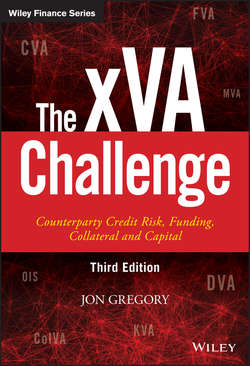Читать книгу The xVA Challenge - Gregory Jon - Страница 11
На сайте Литреса книга снята с продажи.
2
The Global Financial Crisis
2.3 Regulatory reform
ОглавлениеDespite the CRMPG initiatives, regulatory capital requirements and accounting rules aimed at counterparty risk, a major financial crisis had occurred with failures or rescues of (amongst others) AIG, Bear Stearns, Lehman Brothers, Fannie Mae, Freddie Mac and the Royal Bank of Scotland. The crisis highlighted many shortcomings of the regulatory regime. For example, Basel II capital requirements were seen to produce insufficient capital levels, excessive leverage, procyclicality and systemic risk.
From 2009, new fast-tracked financial regulation started to be implemented and was very much centered on counterparty risk and OTC derivatives. The US Dodd–Frank Wall Street Reform and Consumer Protection Act 2009 (Dodd–Frank) and European Market Infrastructure Regulation (EMIR) were aimed at increasing the stability of the over-the-counter (OTC) derivative markets. The Basel III rules were introduced to strengthen bank capital bases and introduce new requirements on liquidity and leverage. In particular, the completely new CVA capital charge was aimed directly at significantly increasing counterparty risk capital requirements. Additionally, the G20 agreed a clearing mandate whereby all standardised OTC derivatives be cleared via central counterparties with the view that this would, among other things, reduce counterparty risk. Later, the G20 introduced rules that were to require more collateral to be posted against those OTC derivatives that could not be cleared (bilateral collateral rules). Other regulatory rules such as the leverage ratio and liquidity coverage ratio would also have significant impacts on the derivatives market.
Although not driven as much by the recent crisis, IFRS 13 accounting guidelines were introduced from 2013 to replace IAS 39 and FAS 157. IFRS 13 provided a single framework for the guidance around fair value measurement for financial instruments and started to create convergence in practices around CVA. In particular, IRFS 13 (like the aforementioned FAS 157) uses the concept of exit price, which implies the use of market-implied information as much as possible. This is particularly important in default probability estimation, where market credit spreads must be used instead of historical default probabilities. Exit price also introduces the notion of own credit risk and leads to DVA as the CVA charged by a replacement counterparty when exiting a transaction.
